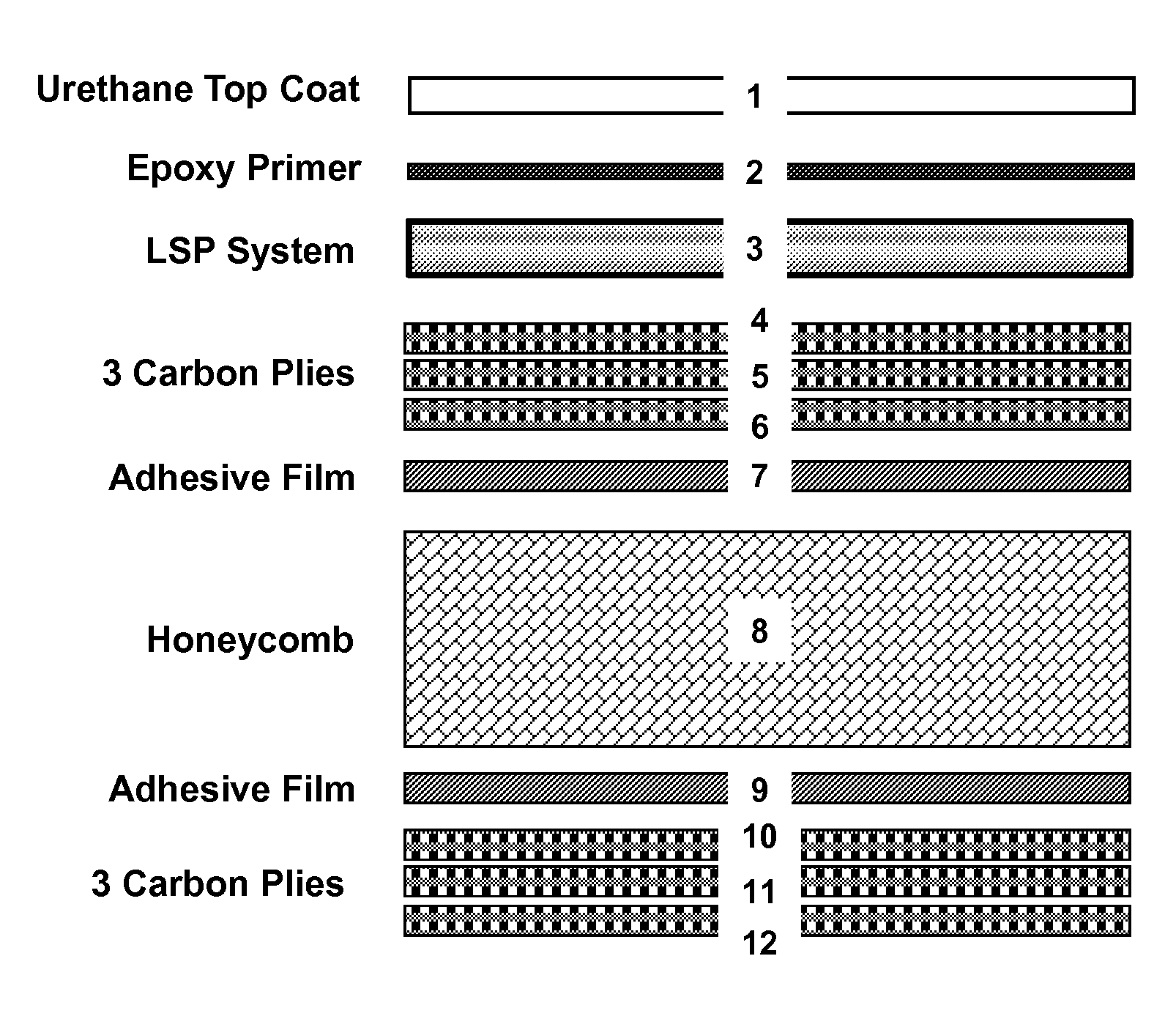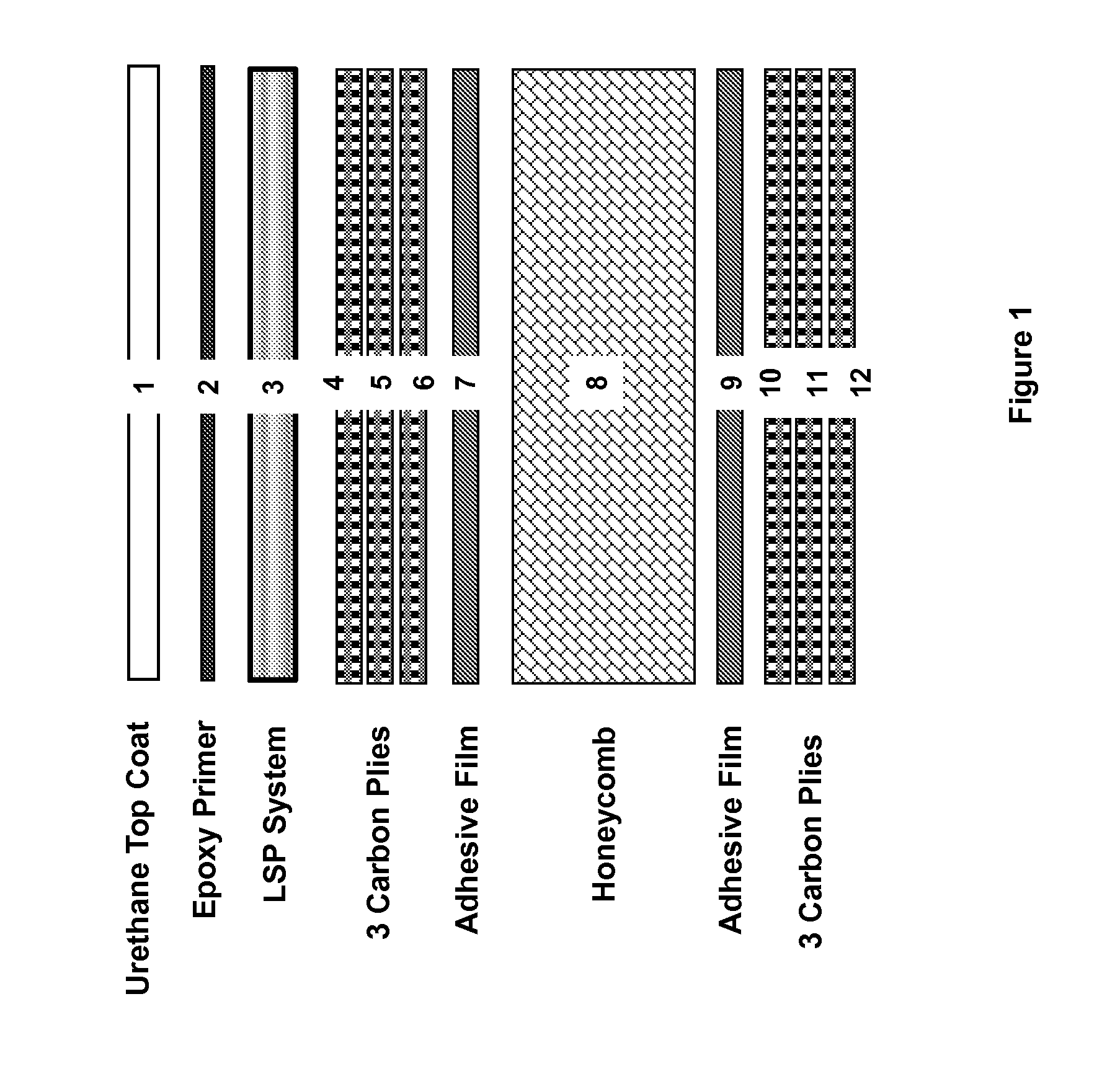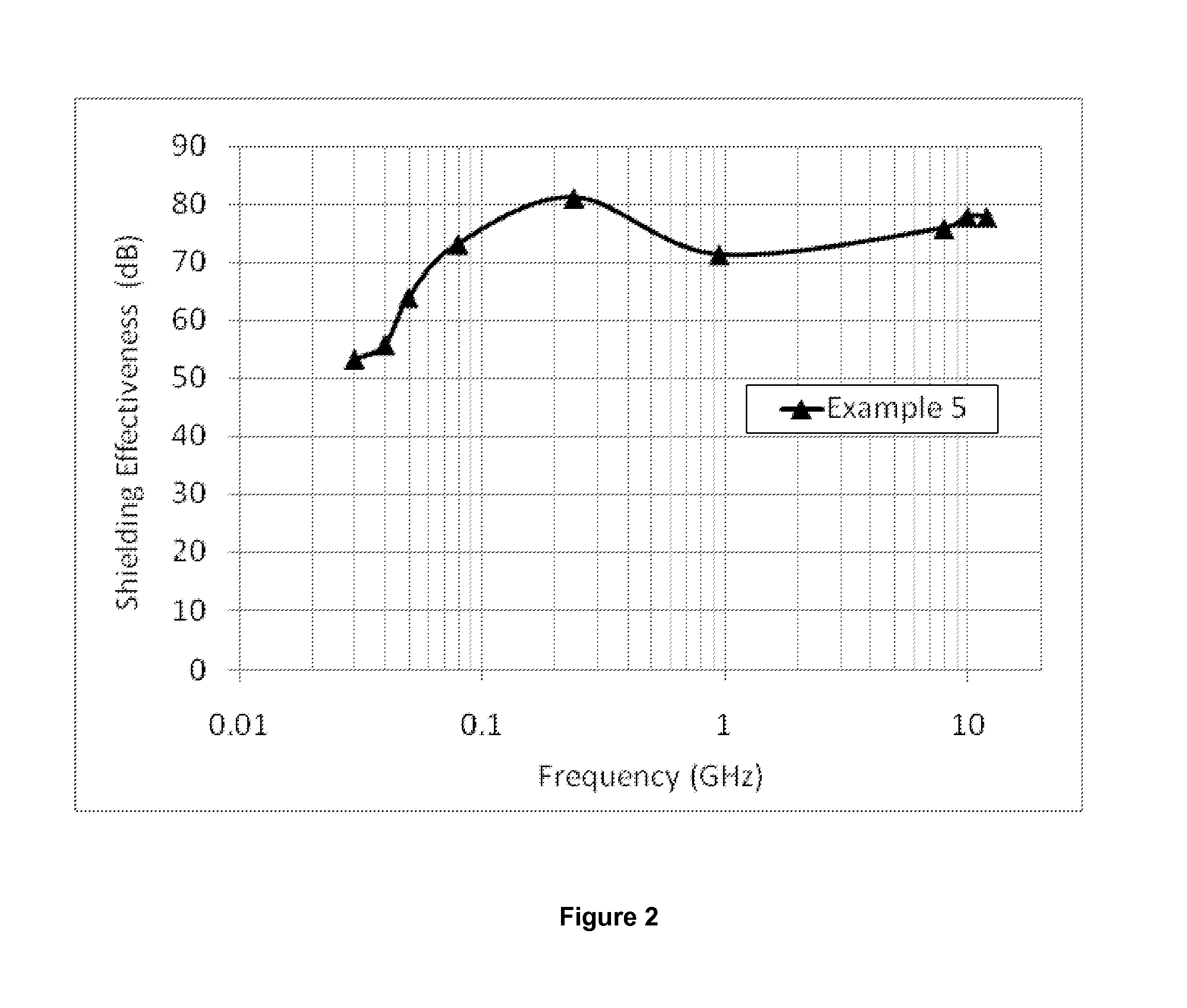Method for protecting a substrate from lightning strikes
a technology of electrical conductivity and substrate, applied in shielding materials, electrically conductive paints, instruments, etc., can solve the problems of increasing vulnerability, affecting avionics, and affecting the electrical conductivity of composite materials, so as to improve thermal and electrical conductivity, reduce filler loading, and eliminate contact resistance
- Summary
- Abstract
- Description
- Claims
- Application Information
AI Technical Summary
Benefits of technology
Problems solved by technology
Method used
Image
Examples
example 1
[0086]Table 2 compares the Zone 1A strike results for various LSP systems (represented pictorially by Layer 3 in FIG. 1). Specific details of the various panels and corresponding LSP systems are as follows: Panel A contained no lightning strike protection system, i.e. Layer 3 (see FIG. 1) was absent during panel construction. Panels B and C (State of Art) were compromised of aluminum and copper Expanded Metal Foils (EMF) that were supplied pre-embedded in a surfacing adhesive film (SG4528-016AL-104V and SG4528-04CU-103V, respectively, from APCM-AME, Plainfield, Conn.) which was further combined with a glass-fiber isolation ply (FGF108-29M-990, Toray Composites America, Inc). The isolation ply was situated between the EMF-adhesive film and topmost carbon fiber layer (Layer 4 in FIG. 1). Ref1 and Ref2 provide additional EMF data previously reported by Welch et al of Spirit AeroSystems (SAMPE Journal, Vol. 44, No. 4, July / August 2008, pp. 6-17). The panels described in this report are ...
example 2
[0098]Table 3 compares the Zone 2A strike results for various LSP systems (represented pictorially by Layer 3 in FIG. 1). Panel G (State of Art) was compromised of aluminum EMF (Grade 016, Pacific Coast Composites) that was combined with a film adhesive (HCS2404-050, 242 g / m2, Heatcon® Composites) which was further combined with a glass-fiber isolation ply (FGF108-29M-990, Toray Composites America, Inc). The isolation ply was situated between the EMF-adhesive film and topmost carbon fiber layer. Panel H was prepared in the same manner as Panel F except using the following ingredients for conductive paste and solvent blend. Conductive paste: 25.1 wt % diglycidyl ether of bisphenol F, 9.6 wt % amine adduct curative, and 65.3 wt % silver flake (17% by volume). Solvent blend: 50% acetone, 18% toluene, 16% methyl ethyl ketone, 11% ethyl acetate, and 5% ligroine, by weight.
[0099]Although both panels in Table 3 prevent catastrophic failure and demonstrate acceptable Action Integrals (i.e.,...
example 3
[0100]As previously mentioned, the self-assembling nature of the materials of the present invention have the ability to form continuous, conductive pathways during the curing of material. This feature is especially unique as it enables one to electrically bridge interfaces (e.g. a splice between two adjacent sections) that are commonly encountered in the original construction of structures and during the repair of existing ones. Furthermore, this method enables one to automate the LSP manufacturing process. State of art materials based on metal foils lack the ability to form continuous interfaces at splice, which often leads to very large electrical resistances across interfaces between separate LSP EMFs. Moreover, automated of these LSP is prohibited owing to splice issues, fragility, and weight issues.
[0101]To illustrate the ability of the present invention to electrically bridge interfaces, the same self-assembling LSP material for Panel H was spray coated onto two different 10 c...
PUM
| Property | Measurement | Unit |
|---|---|---|
| frequency | aaaaa | aaaaa |
| frequency | aaaaa | aaaaa |
| frequencies | aaaaa | aaaaa |
Abstract
Description
Claims
Application Information
 Login to View More
Login to View More - R&D
- Intellectual Property
- Life Sciences
- Materials
- Tech Scout
- Unparalleled Data Quality
- Higher Quality Content
- 60% Fewer Hallucinations
Browse by: Latest US Patents, China's latest patents, Technical Efficacy Thesaurus, Application Domain, Technology Topic, Popular Technical Reports.
© 2025 PatSnap. All rights reserved.Legal|Privacy policy|Modern Slavery Act Transparency Statement|Sitemap|About US| Contact US: help@patsnap.com



